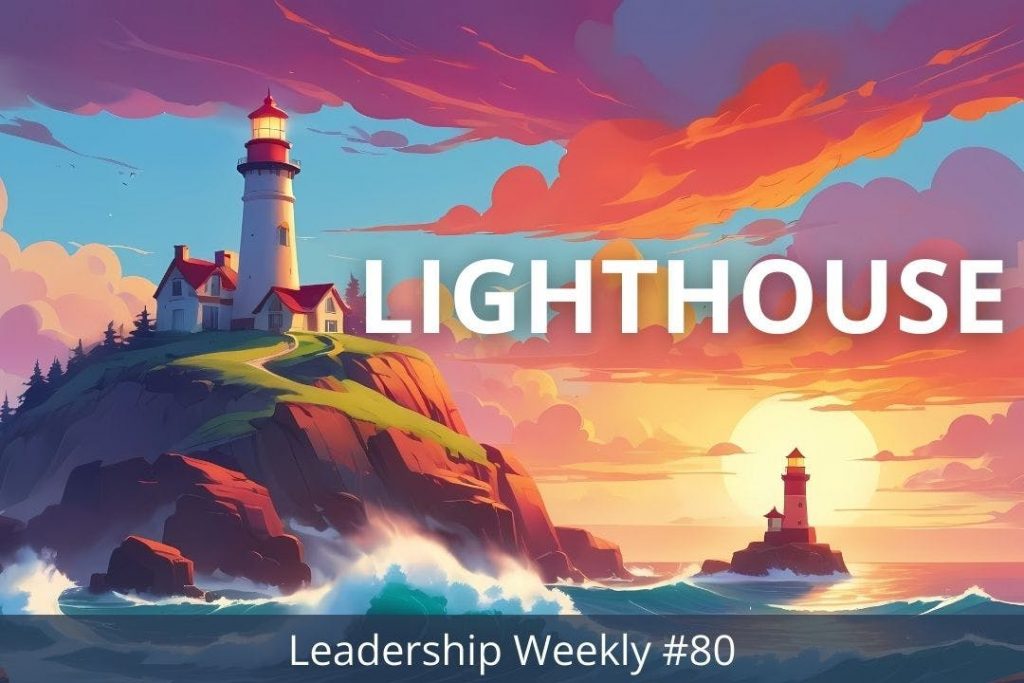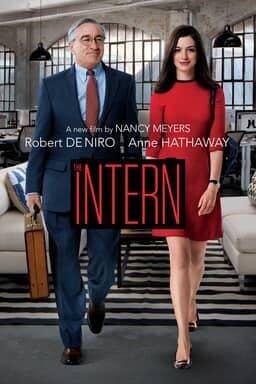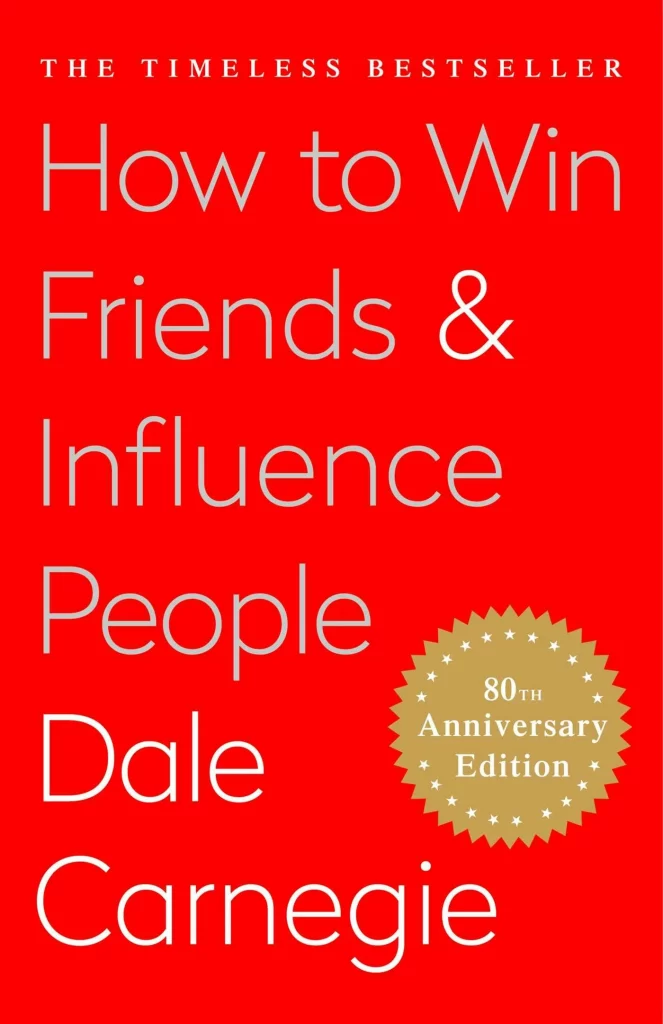In this week's edition, we're taking a look at a wide variety of topics, from improving your meetings, to an underutilized opportunity, to a great new Book of the Month. We also revisit one of the first posts I wrote on the Lighthouse blog, and a fun poll about Steve Jobs. We even have a movie recommendation for you.
Let’s dive in…
Table of contents:
- 🥘 Food for Thought on Meetings as Time-Savers?
- 📰 News & Reports for Managers on a Mindset Shift for the Workforce
- 📚 Book of the Month on Revisiting a Classic
➡️ Did a friend forward this to you? Get every issue straight to your inbox by signing up here.

Note: This is a preview of our weekly leadership newsletter, Lighthouse Leadership Weekly (LLW).
To get this sent to your inbox every week, along with our latest long form essays on this blog, you can sign up here.
🥘 Food for Thought
"When utilized properly, meetings are time savers." - Patrick Lencioni, best selling leadership author of Death by Meeting and the 5 Dysfunctions of a Team
I recently finished reading "Death by Meeting" at the recommendation of a Lighthouse reader. It was a short, fun read that felt like a lighter version of the Goal, because they're both a fictionalized story used to teach a business concept.
The biggest lessons I took from the book were:
- You need the right purpose for a meeting to be effective
- You need to have a variety of meeting types, so every kind of topic has a clear place.
Let's explore them a bit:
1) You need the right purpose for a meeting to be effective
There can be a variety of reasons to have a meeting, but if you try to do a little of everything, or too much of any one thing compared to the time allotted, the meeting often turns into a mess.
So what are those purposes you could have for a meeting? The book has a nice, simple list:
- Sharing daily schedules and activities: Think like a daily standup, where a group of people get on the same page quickly on what everyone is working on.
- Weekly tasks, obstacles, issues, and metrics: These all play off each other to set high level tactics and expectations on the immediate work to be done.
- Strategy and big decisions: These are when you need to prepare a lot of context and have some serious back and forth to explore an idea and consider making changes or a key decision.
- Broad discussions and major shifts: Getting to the 10,000 foot view, these discussions are for big company-wide shifts and exploring massive changes you would make to your team or company. There are often no clear answers, but the decisions are critical.
Reading through this, you probably can see why those can't all be done in the same meeting.
Yet, how often have you been talking about a key project your team is currently working on, and suddenly your meeting shifts to whether the project should be worked on at all? Or a big strategy discussion or decision gets derailed by suddenly getting into the weeds of specific tasks related to it?
That's why having discipline in your meetings, and having different meetings for different purposes is so important. And that brings us to the second, complimentary lesson...
2) You need to have a variety of meeting types, so every kind of topic has a clear place.
The only way to avoid the problems of the different types of meetings bleeding into each other is to set clear boundaries. And that only works if everyone knows what the different types are, and believes that when you say, "this is better served in another meeting" that it will actually happen.
Fortunately, Lencioni has a handy table we've replicated for you to see what these meeting types are and the boundaries to set in them:

As you can see, each type has a different length, frequency, and format. The important thing is to recognize that if one of the meetings has another meeting's topics come up, you redirect them to the appropriate meeting. That could sound like any of the following:
- "Thanks for raising that concern. To keep us on track in our Daily Check-in, please bring up this issue in our Weekly Tactical meeting on Friday."
- "I think that's a bit too in the weeds for what we're trying to do here. Assuming we decide to move forward after this discussion, let's talk about that in Friday's Tactical meeting."
- "That's a great point. And now that we know we're going to respond to our competitor's move this way, let's make this a topic for our next Monthly Strategic meeting."
The point is, you have to develop the skill to know when a topic is going to derail the focus of any of the meeting types, and then redirect that energy to the appropriate meeting for it. This will make the team member getting temporarily shut down feel heard still, because they know they'll get their chance to discuss it at another, better time.
---
Going back to Lencioni's original quote, it's important to remember why we have meetings in the first place; the goal is to coordinate, communicate in real time, share updates and ideas, as well as make important decisions.
Done well, meetings can absolutely save you time as he contends in this week's Food for Thought quote. However, a key part of making that happen is having the right meetings, then sticking to what each meeting is really for.
If this process resonates with you and you want to go deeper, Death by Meeting is a light, entertaining read, with a helpful "How To" guide at the end to make sure you know how to apply the lessons.
📰 News & Reports for Managers
📌 How can the aging population contribute now and in the future?
I came across this chart from McKinsey and it got me thinking about a lot of things leaders should be thinking about long term:

More people are working longer and more than they used to.
And while some that retire are taking easier jobs like driving Uber or certain service roles, others are sticking in the industry they started in.
Given how much we've learned about aging and health in recent years, I think it's important as leaders to reflect on how we view older members of the workforce. Many have valuable wisdom and experience, in addition to a lot of capability still.
I'm reminded of a good movie called, "The Intern" starring Robert De Niro and Anne Hathaway about exactly this scenario:

In the film, De Niro is retired, and looking for purpose in his life after the passing of his wife. He ends up taking an internship at a startup in New York City. Yet, he quickly proves way more valuable than what the internship job rec asked for.
He basically becomes wise counsel for the startup founder, as well as a valued member of the team sharing his experience and knowledge.
With that in mind, I think it's worthwhile to consider a few things this week:
- How can older members of the workforce help you? If you have a growth mindset, and so do they, then you could get a lot more than you expect.
- Do you have a bias against older employees? Be honest. It's often tempting to hire the high potential, young employee, instead of going with the older, seasoned one. And sometimes that's the right call. But other times, you may be missing out, especially if you literally dump any resume that looks over a certain age.
- What would you like to do in later years? Whether you're 27, 37, or 57, it's helpful to zoom out sometimes. What do you see yourself wanting to do? For example, my father still mentors business owners through SCORE, which he loves as a way to help, give back, and keep that part of his mind sharp, even at age 71.
📚 Book of the Month on Revisiting a Classic
Since we started this new format for the newsletter, we've recommended 18 books to help you be a better leader. I've read every single one of them in full, and some of them multiple times.
And I take those recommendations very seriously.
A book recommendation is a BIG investment. Even if you're a fast reader, your average book is a 3-6 hour time commitment.
Knowing this, my philosophy on books is similar to investor/entrepreneur/philosopher Naval Ravikant's:
“I would rather read the best 100 books over and over again until I absorb them, rather than read all the books. I no longer track books read, it’s about understanding concepts.” — @naval
— Pomp Podcast (@PompPodcast) July 11, 2022
(h/t @joerogan) pic.twitter.com/zcDF8GmmO3
That means I have multiple books I re-read every year, and others I've strategically revisited years after a first read.
And one of those books I re-read every year is this month's Book of the Month:

I first read How to Win Friends and Influence People in 2011. Since then I've read it over a dozen times.
Why would you read any book that many times?!?
This is a fair question, and part of the reason I chose this book this month is to talk about that.
There's a few reasons I re-read this book in particular, that can also apply to other books, too:
- The ideas are timeless: Dale Carnegie's book was originally published in 1936, and the ideas are just as relevant today as ever.
- More ideas to absorb: Especially this book is packed full of tactics, approaches, and strategies. There's over 30 chapters, each with an action to take. I always find a few that are most relevant to me at the time I'm reading it.
- Soaking in a mindset: This book is great for embracing a certain way of thinking and doing things. As much as I may try to act out a specific tactic (like smile when you're on the phone), the book also tends to raise my EQ through some osmosis for a while after I finish reading it.
- A healthy reminder: There are some aspects of the book I can always use a refresher on, even if I "already know that." There is always a knowledge vs. doing gap, and re-reading books like this can push you back into key habits.
- Better to re-read a classic than read new junk: As Naval rightly points out, a lot of books can be junk. You'll get more out of revisiting a great book than going through a mediocre or poor one.
So with all that in mind, will you join me in reading Dale Carnegie's How to Win Friends and Influence People this month?
Whether it's your first, third, or twentieth time, I think we'll all get something valuable from it.
>> You can pick up your copy on Amazon here.
Sign up to get this newsletter & our latest blog posts straight to your inbox:




